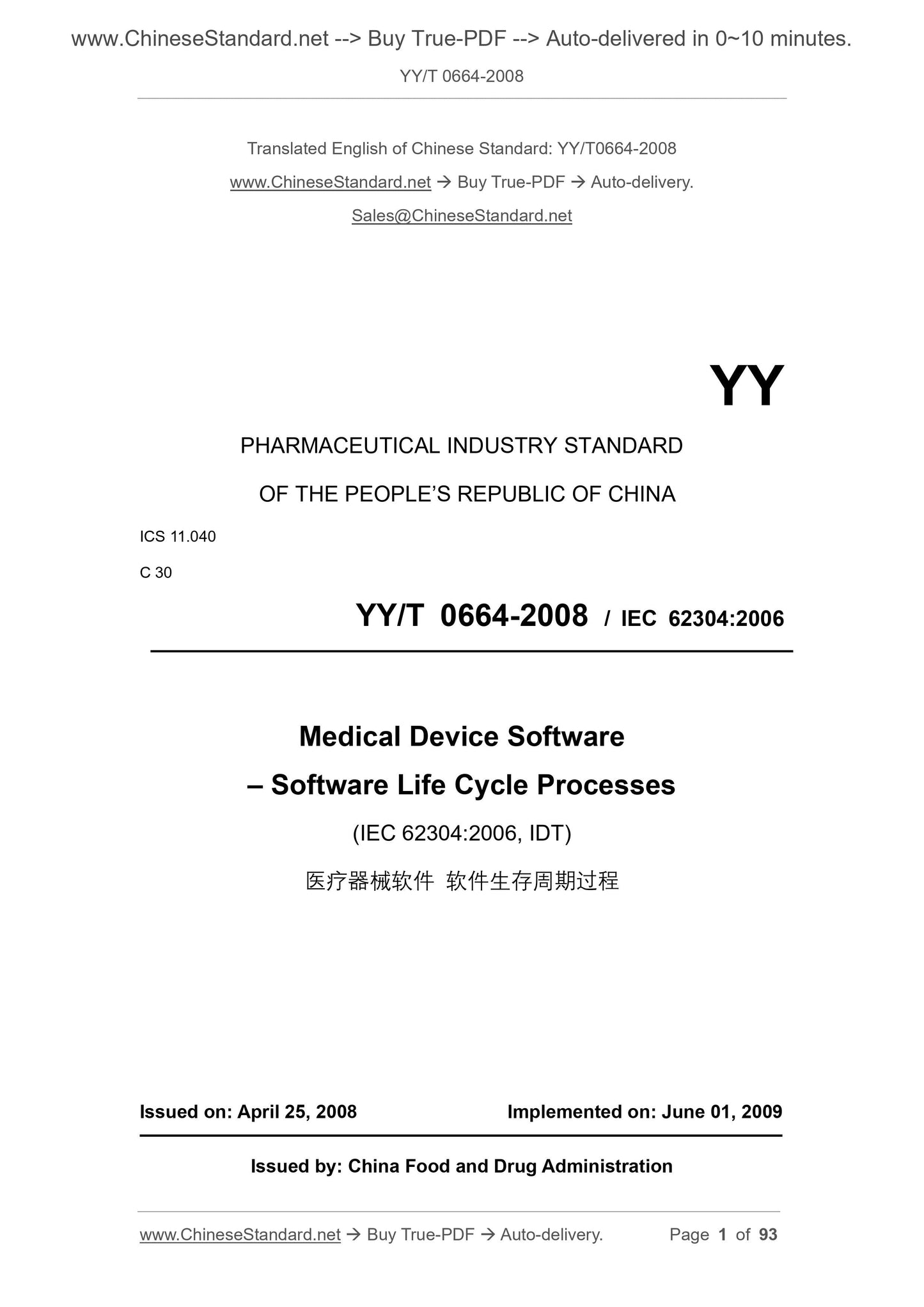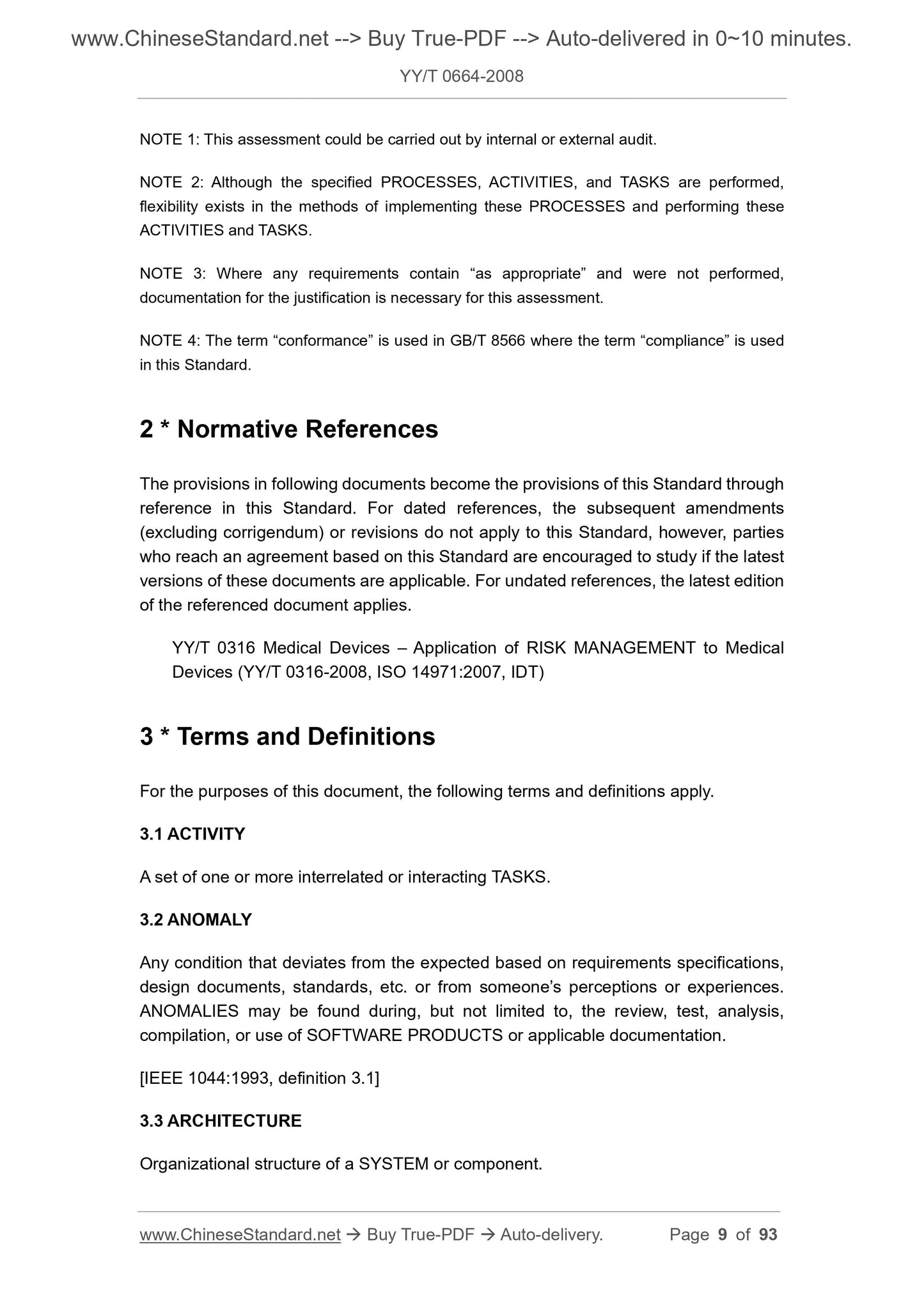1
/
of
7
PayPal, credit cards. Download editable-PDF and invoice in 1 second!
YY/T 0664-2008 English PDF (YY/T0664-2008)
YY/T 0664-2008 English PDF (YY/T0664-2008)
Regular price
$500.00
Regular price
Sale price
$500.00
Unit price
/
per
Shipping calculated at checkout.
Couldn't load pickup availability
YY/T 0664-2008: Medical device software - Software life cycle processes
Delivery: 9 seconds. Download (and Email) true-PDF + Invoice.Get Quotation: Click YY/T 0664-2008 (Self-service in 1-minute)
Newer / historical versions: YY/T 0664-2008
Preview True-PDF
Scope
1.1 PurposeThis standard specifies the life cycle requirements for medical device software. A set of processes, activities, and tasks described in this standard
Mechanical software life cycle process establishes a common framework.
This standard applies to the development and maintenance of medical device software.
When the software itself is a medical device, or when the software is an embedded part or component of the final medical device, this standard applies to that medical device
Development and maintenance of instrument software.
This standard does not cover the identification and final release of medical devices, even when the medical device consists entirely of software.
1.3 Relationship with other standards
When developing medical devices, this medical device software life cycle standard is used in conjunction with other applicable standards. This standard and other related
The relationship between relevant standards is shown in Appendix C.
1.4 compliance
Compliance with this standard means that all processes, activities, and tasks identified in this standard are implemented in accordance with the software security level.
Note. The software security level assigned to each requirement is determined in the text following the standard requirements.
Check all documents required by this standard (including risk management documents and processes, activities, and tasks required for software security levels).
Service assessment) to determine compliance. See Appendix D.
Note 1.This assessment can be achieved by internal or external audits.
NOTE 2 Even if the processes, activities and tasks to be completed are specified, the implementation of these processes and the methods for performing these activities and tasks are flexible.
Note 3.When any requirement that includes "as appropriate" is not completed, it is necessary for this assessment to document for reasons.
Note 4.Where the term "compliance" is used in this standard, the term "conformance" is used in GB/T 8566.
Basic Data
| Standard ID | YY/T 0664-2008 (YY/T0664-2008) |
| Description (Translated English) | Medical device software - Software life cycle processes |
| Sector / Industry | Medical Device and Pharmaceutical Industry Standard (Recommended) |
| Classification of Chinese Standard | C30 |
| Classification of International Standard | 11.040 |
| Word Count Estimation | 60,694 |
| Date of Issue | 2008-04-25 |
| Date of Implementation | 2009-06-01 |
| Quoted Standard | YY/T 0316 |
| Adopted Standard | IEC 62034-2006, IDT |
| Regulation (derived from) | SFDA [2008] No. 192 |
| Issuing agency(ies) | State Food and Drug Administration |
| Summary | This standard specifies the medical device software life cycle requirements. In this standard describes a set of processes, activities and tasks for medical device software life cycle processes to establish a common framework. This standard applies to medical device software development and maintenance. |
Share













